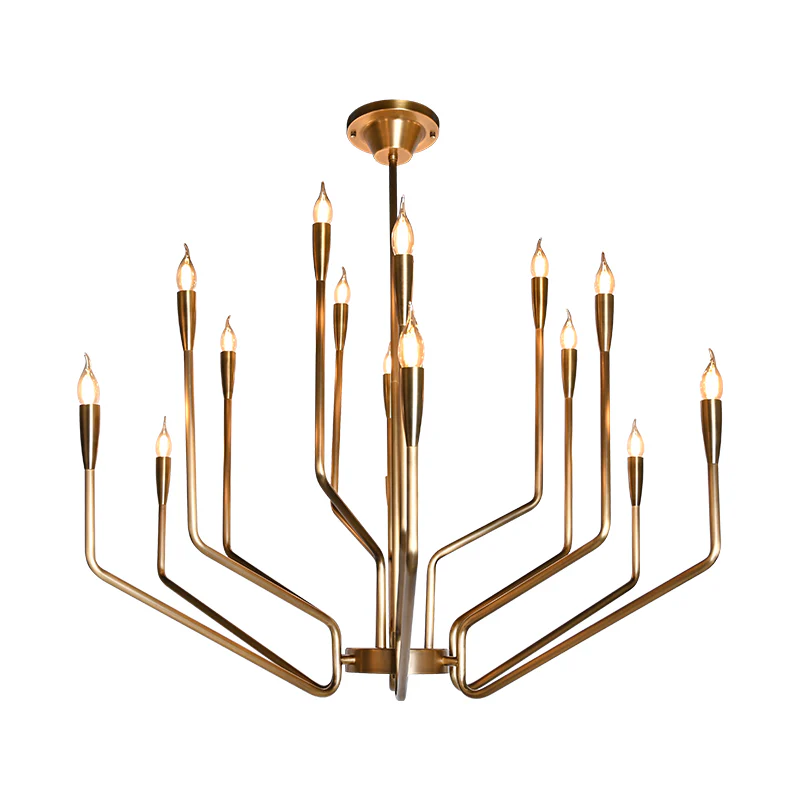The Ultimate Guide to Choosing the Best Ceiling Light for Your Space
The Ultimate Guide to Choosing the Best Ceiling Light for Your Space
Introduction to Ceiling Lights
Ceiling Lights are essential fixtures in any home or office, providing much-needed illumination and adding aesthetic appeal to your environment. Whether you're looking to brighten a cozy reading nook or illuminate a spacious conference room, selecting the right Ceiling Light can drastically affect the functionality and ambiance of your space. In this guide, we’ll explore the various types of Ceiling Lights available, how to choose the perfect one for your needs, and some tips and tricks to ensure your lighting complements your interior design.
Types of Ceiling Lights
Ceiling Lights come in numerous styles and functions, making it crucial to understand the options available. Below are some of the most common types:
| Type | Description | Best For |
| Flush Mount | Mounted directly against the ceiling, ideal for low ceilings. | Hallways, bedrooms, and kitchens. |
| chandeliers | Decorative fixtures that hang down, often featuring multiple bulbs. | Dining rooms, entryways, and larger spaces. |
| Pendant Lights | Hanging lights that provide focused illumination, available in various styles and sizes. | Kitchen islands, dining areas, and modern offices. |
| Track Lighting | Flexible lighting that can be directed to highlight specific areas. | Art galleries, exhibition spaces, and workstations. |
| Recessed Lighting | Installed into the ceiling, providing a clean and minimalist look. | Living rooms, kitchens, and bathrooms. |
Factors to Consider When Choosing Ceiling Lights
When selecting the perfect Ceiling Light for your space, consider the following factors:
1. Room Size
The size of the room significantly influences the type and brightness of the Ceiling Light you should choose. Larger rooms may require multiple fixtures or a more powerful light source, while smaller areas can benefit from compact and energy-efficient models.
2. Ceiling Height
Your ceiling height determines which lighting types are most suitable. For example, flush mount lights work well in spaces with lower ceilings. In contrast, chandeliers or pendant lights are better suited for rooms with higher ceilings.
3. Purpose of the Room
Consider how the room will be used. For example, you may want bright, adjustable lighting for a workspace, while a cozy, warm light may be better in a bedroom or living area for relaxation.
4. Style and Décor
Choose Ceiling Lights that complement the overall style of your home. A modern, sleek design may work well in a contemporary home, while a vintage or rustic fixture might be appropriate for a traditional space.
Popular Trends in Ceiling Lighting
Lighting trends continuously evolve, and staying updated can help you select the most trendy and functional Ceiling Lights for your home. Some current trends include:
1. Smart Lighting
With smart technology on the rise, many Ceiling Lights now come equipped with features such as remote control, programmable settings, and compatibility with smart home systems.
2. Minimalist Designs
Minimalism remains a popular aesthetic, with simple shapes and neutral colors dominating many Ceiling Light designs. Cleaning lines and unobtrusive fixtures allow for more focus on other decor elements in the room.
3. Eco-Friendly Options
As sustainability becomes increasingly important, many consumers are turning to energy-efficient lighting options such as LEDs, which use less energy and last longer than traditional incandescent bulbs.

Installation Tips for Ceiling Lights
Installing Ceiling Lights can be a straightforward process, but following specific steps carefully ensures safety and functionality:
1. Turn Off Power
Before beginning any installation, make sure to turn off the electricity at the circuit breaker to avoid accidents.
2. Gather Your Tools
You will typically need a screwdriver, wire connectors, a voltage tester, and possibly a ladder, depending on the height of your ceiling.
3. Follow Manufacturer's Instructions
Every Ceiling Light comes with specific installation instructions. Be sure to read them thoroughly before beginning.
4. Test the Fixture
Once installed, turn the power back on and test the fixture to ensure everything works correctly.
Maintenance and Care of Ceiling Lights
Keeping your Ceiling Lights clean and well-maintained not only extends their lifespan but also enhances their appearance. Here are a few maintenance tips:
1. Dust Regularly
Dust can accumulate on Ceiling Lights, reducing their brightness. Use a soft cloth or duster to wipe down the fixture periodically.
2. Replace Burnt-Out Bulbs Promptly
To maintain brightness and functionality, replace any burnt-out bulbs as soon as possible. Use the correct wattage to avoid overheating.
3. Check for Damage
Regularly inspect your ceiling fixtures for any signs of damage, such as cracks or loose wiring, and repair them promptly to ensure safety.
Conclusion: Choosing the Right Ceiling Light for Your Needs
Choosing the right Ceiling Light is crucial to creating a comfortable and visually appealing atmosphere in any space. Consider factors such as room size, ceiling height, and overall design when making your decision. With many types of Ceiling Lights available—ranging from chandeliers to flush-mounted fixtures—you are sure to find a perfect fit for your needs. Incorporating current trends like smart lighting and minimalist designs can further enhance your lighting choices. By following our installation and maintenance tips, you can ensure that your Ceiling Lights not only look great but also perform effectively for years to come.
In summary, the right Ceiling Light can transform your living space. Whether you are renovating your home or simply updating a single room, take the time to choose wisely. After all, effective lighting is key to establishing the right mood and atmosphere in any environment.
